|
|
|
| | Arts Calendar / February 12 / Museums |
|
|
|
|
|
Permanent exhibition: the writer's Moscow apartment with a small display of photos and manuscripts. A.P. Chehov lived in this house since the autumn of 1886 to the spring of 1890. The museum restored the Cabinet and bedroom of A.P. Chehov, his brother Michael's room, lounge and nurse Mary's room. In other rooms literary exposition devoted to the life and works of the writer are presented. The heart of exposition is made up by personal archive material about Chehov donated to the State by Chekhov's family.
Chekhov Memorial Flat  |
|
|
|
|
| Arkhangelskoye Estate Museum |
|
|
|
|
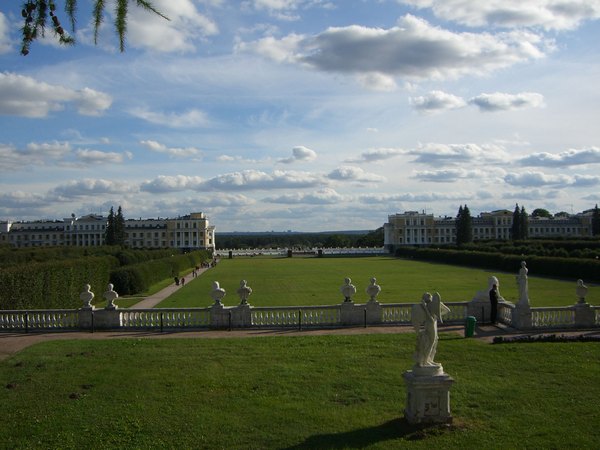 The country estate "Arkhangelskoye" is a wonderful monument of Russian culture of XVIII-XIX centuries. It is famous for the magnificent beauty of its garden and park ensemble and its splendid collection of paintings, drawings, sculptures and pieces of applied art and apart from it the superb collection of rare books. Arkhangelskoye belonged to the prince Golitsinsky’s family until 1809 but in 1810 it was bought by the richest Russian noble - prince Yusupov, who was a collector and patron of art. It took Yusupov 50 years to build and decorate the ensemble. He invited such well-known architects as Gern, Trombaro, Pettondi, Gonzago, Bove and others. The first third of the XIX century was the period of golden age for Arkhangelskoye. This wonderful ensemble consists of Michael Archangel Church, palace with a terraced park, a theatre built in 1817-1818, a small palace "Caprice" and pavilion "Tchainy Domic" ("Small Tea House"). The country estate "Arkhangelskoye" is a wonderful monument of Russian culture of XVIII-XIX centuries. It is famous for the magnificent beauty of its garden and park ensemble and its splendid collection of paintings, drawings, sculptures and pieces of applied art and apart from it the superb collection of rare books. Arkhangelskoye belonged to the prince Golitsinsky’s family until 1809 but in 1810 it was bought by the richest Russian noble - prince Yusupov, who was a collector and patron of art. It took Yusupov 50 years to build and decorate the ensemble. He invited such well-known architects as Gern, Trombaro, Pettondi, Gonzago, Bove and others. The first third of the XIX century was the period of golden age for Arkhangelskoye. This wonderful ensemble consists of Michael Archangel Church, palace with a terraced park, a theatre built in 1817-1818, a small palace "Caprice" and pavilion "Tchainy Domic" ("Small Tea House").
Arkhangelskoye Estate  |
|
|
|
|
| Art from Ancient Egypt to Nowadays |
|
|
|
|
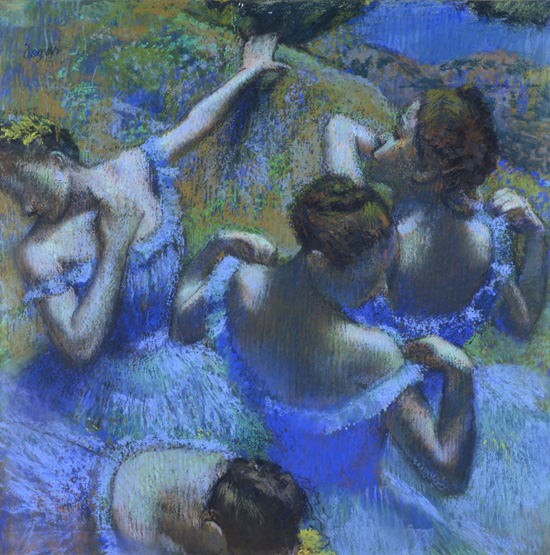 The Museum was founded on the basis of the Museum of Fine Arts and Antiquities of the Moscow University as an educational and public institution where the most important periods of art history were represented: sculpture, pictorial and galvanic copies, etc. Pushkin Fine Arts Museum has one of the most impressive collections of foreign art dated from ancient times to modern days. The exposition includes a vast collection of tinted plaster casts of the famous ancient, medieval and Renaissance sculptures, collection of original works of foreign artists, sculptors and graphic artists, and objects of decorative arts as well. Ground floor rooms present mostly original works: works of art of Ancient Egypt, antiquities, European paintings of the VII-XVIII centuries; Italian and Greek courtyards houses sculptures. On the first floor there are rooms with sculptures of Ancient Greece, Rome, Middle Ages and Renaissance. Painting rooms present art of the XIX-XX centuries. Pushkin Fine Arts Museum consists of 6 buildings: four on Volkhonka ul., and two more in other parts of the city. Museum Complex on Volkhonka includes Main Building, Gallery, Museum of Private Collections & Educational Center "Museon". Pushkin Museum Departments in other parts of Moscow include Educational Art Museum of Casts named after Ivan Tsvetaev and Sviatoslav Richter's Memorial Apartment. The Museum was founded on the basis of the Museum of Fine Arts and Antiquities of the Moscow University as an educational and public institution where the most important periods of art history were represented: sculpture, pictorial and galvanic copies, etc. Pushkin Fine Arts Museum has one of the most impressive collections of foreign art dated from ancient times to modern days. The exposition includes a vast collection of tinted plaster casts of the famous ancient, medieval and Renaissance sculptures, collection of original works of foreign artists, sculptors and graphic artists, and objects of decorative arts as well. Ground floor rooms present mostly original works: works of art of Ancient Egypt, antiquities, European paintings of the VII-XVIII centuries; Italian and Greek courtyards houses sculptures. On the first floor there are rooms with sculptures of Ancient Greece, Rome, Middle Ages and Renaissance. Painting rooms present art of the XIX-XX centuries. Pushkin Fine Arts Museum consists of 6 buildings: four on Volkhonka ul., and two more in other parts of the city. Museum Complex on Volkhonka includes Main Building, Gallery, Museum of Private Collections & Educational Center "Museon". Pushkin Museum Departments in other parts of Moscow include Educational Art Museum of Casts named after Ivan Tsvetaev and Sviatoslav Richter's Memorial Apartment.
Pushkin Fine Arts Museum  |
|
|
|
|
| Art of the XX Century (part 2) |
|
|
|
|
The second part of the exposition "Art of the XX Century" includes works of art from 1920s: 300 canvas, 300 pieces of graphics and 200 sculptures are presented in 12 halls. (15-38) The authors of the exposition emphasized the problem of the new artistic language and aimed to show how it had roused, developed, transformed, survived and got renewed according to the social and political situation in Russia in the last century. The exposition includes works by Nemuhin, Plavinsky, Nikonov, Salahov, Nesterova, Dubosarsky, Vinogradov and others.
Tretyakov Gallery at Krymsky Val  |
|
|
|
|
|
|
This museum is a unique underground (ex-top-secret) special project of the 1950s. Located in the city center 60 meters deep underground, it is a huge (more than 7000 sq.m) city with about 300 premises, tunnels and gaps. 2500 civil and military specialists of the Ministry of Defense, Ministry of Communication and Technical management of KGB (USSR) used to work here to provide telegraphic-telephone radio communication and army governance in case of nuclear war.
Cold War Museum  |
|
|
|
|
|
|
A business man and collector Igor Markin opened a new Contemporary Art Museum ART4.ru. Contemporary Art Museum ART4.ru presents more than 800 works of modern artists. Kabakov's "The fly", Kulik's "The dog", Dubosarsky's "Picasso in Moscow", Faibisovich's "Lev Rubinstein in the Metro" make up just a minor part of the permanent exposition of Igor Markin's new museum.
ART4.ru  |
|
|
|
|
| Contemporary History of Russia |
|
|
|
|
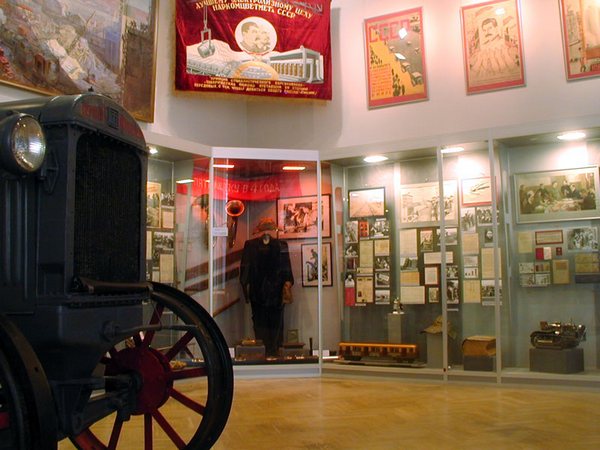 This museum is one of the largest centers of learning Russian nation of the second half of the nineteenth century up to the present day. Carrying out the work of collecting for almost 90 years, museum team used comprehensive scientific research based upon modern achievements of the history and allied sciences, creative conceptualization and application of stored knowledge and experience in different fields of museum's arrangement. Historical sources and documentary records, which reflect social, political and economic history of Russia, intellectual development of the society for 150 years' period of its progress are collected, studied and exhibited in the museum. Nowadays museum has about 2 million historical and cultural records. Museum's exposition shows Russian historical path with none of the periods - even the most tragic ones - being excluded. This museum is one of the largest centers of learning Russian nation of the second half of the nineteenth century up to the present day. Carrying out the work of collecting for almost 90 years, museum team used comprehensive scientific research based upon modern achievements of the history and allied sciences, creative conceptualization and application of stored knowledge and experience in different fields of museum's arrangement. Historical sources and documentary records, which reflect social, political and economic history of Russia, intellectual development of the society for 150 years' period of its progress are collected, studied and exhibited in the museum. Nowadays museum has about 2 million historical and cultural records. Museum's exposition shows Russian historical path with none of the periods - even the most tragic ones - being excluded.
Museum of Contemporary History of Russia  |
|
|
|
|
|
|
Darwin Museum was established in 1907 under High Female Courses run by its founder professor Alexander Kots. In 1992 the museum welcomed its first visitors. Darwin Museum aims to cover as much information about origin of species as possible. Evolution from the very beginning to the present is on permanent display. Moving models of dinosaurs, stuffed animals and birds, underwater world, ecology, etc.
Darwin Museum  |
|
|
|
|
| Development of Engineering |
|
|
|
|
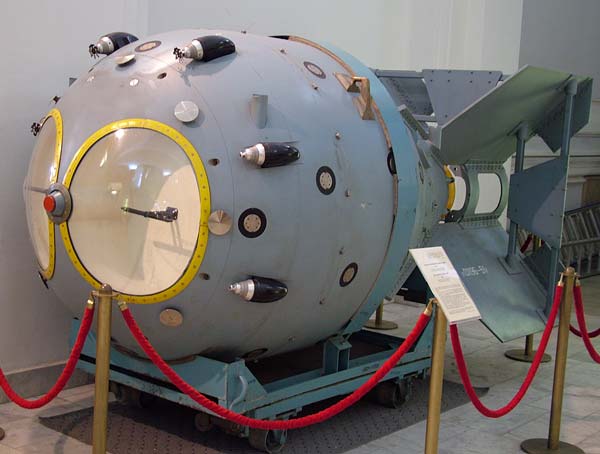 Polytechnic Museum is a national museum of science and engineering history, one of the largest scientific and technical museums in the world. It was established in 1872 on the initiative of the Russian scientists, members of Emperor Society of Natural Science, Anthropology and Ethnographic. Museum building located in the very center of Moscow was designed by Monighetti. Now Polytechnic Museum possesses more than 170,000 exhibits, about 100 collections, and many of them are unique. The exposition occupies about 10,500 sq.m and 65 halls presenting different fields of engineering – Mining, Metallurgy, Chemistry Technique, Automatics and Computer Engineering, Communication, Optics, Meteorology, Cosmonautics, Transport. Annually Polytechnic Museum welcomes about 450,000 visitors. Polytechnic Museum is a national museum of science and engineering history, one of the largest scientific and technical museums in the world. It was established in 1872 on the initiative of the Russian scientists, members of Emperor Society of Natural Science, Anthropology and Ethnographic. Museum building located in the very center of Moscow was designed by Monighetti. Now Polytechnic Museum possesses more than 170,000 exhibits, about 100 collections, and many of them are unique. The exposition occupies about 10,500 sq.m and 65 halls presenting different fields of engineering – Mining, Metallurgy, Chemistry Technique, Automatics and Computer Engineering, Communication, Optics, Meteorology, Cosmonautics, Transport. Annually Polytechnic Museum welcomes about 450,000 visitors.
Polytechnic Museum at VDNKH  |
|
|
|
|
| Formation and Development of Avant-garde Art |
|
|
|
|
The founder and first director of the museum is Z. Tseriteli, the president of Russian Academy of Arts. The museum presents major stages of formation and development of avant-garde art. The collection mostly consists of Russian works; however, a considerable part of it is dedicated to foreign artists. For example, on permanent display you may find graphical works by Picasso, Leger, Miro; sculptures by Dali, Pomodoro; painting by Rousseau, Gilot. One of the brightest exhibits is a fragment of Eiffel Tower’s stair dismantled during the reconstruction. For about 100 years the flight of stairs performed utilitarian function, now it has artistic and historical significance.
Moscow Museum of Modern Art  |
|
|
|
|
| Gold: Metal of Gods and God of Metals |
|
|
|
|
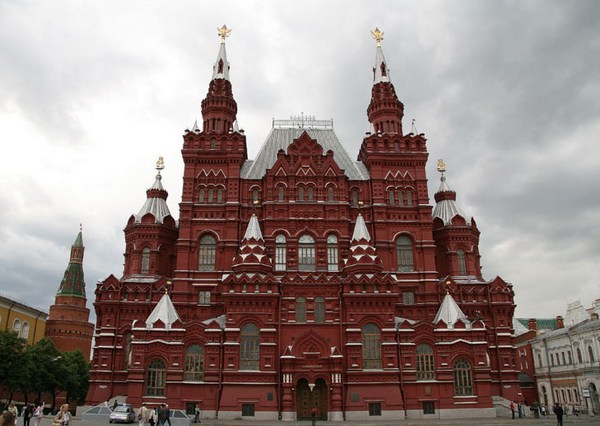 Items of decorative and applied arts, archaeological finds, numismatics from the "Golden Storeroom" fund. The first part of the exposition is dedicated to the “metal of god” – patterns of church utensils – icons and books decorated with golden frameworks and precious stones. The second part presents the “metal of tsars and symbol of power” – golden items connected with different outstanding historical figures. The third part of the exposition shows gold as the symbol of wealth and luxury: highly artistic antic, West European, Eastern and Russian pieces of tableware, jewellery, watches, snuffboxes, cigar cases, unique tea services of the XIX century that belonged to the imperial family and others. Items of decorative and applied arts, archaeological finds, numismatics from the "Golden Storeroom" fund. The first part of the exposition is dedicated to the “metal of god” – patterns of church utensils – icons and books decorated with golden frameworks and precious stones. The second part presents the “metal of tsars and symbol of power” – golden items connected with different outstanding historical figures. The third part of the exposition shows gold as the symbol of wealth and luxury: highly artistic antic, West European, Eastern and Russian pieces of tableware, jewellery, watches, snuffboxes, cigar cases, unique tea services of the XIX century that belonged to the imperial family and others.
Historical Museum  |
|
|
|
|
| History of Christ the Savior Cathedral |
|
|
|
|
On permanent display are fragments of the memorial slabs with the names of the heroes, pieces of artistic and ornamentally-decorative art. Unique exhibits show the entire history of the great cathedral from its foundation n 1839 through destruction in 1931 and reconstruction in 2000.
|
|
|
|
|
| History of Russia from the Stone Age to the 19th Century |
|
|
|
|
On permanent display are archaeological artefacts covering different stages of Eurasian history (from the Palaeolithic Age to early Middle Ages) as well as historical costumes, weapons, jewellery, coins, personal and national State Seals and insignias, early printed Russian books and ancient manuscripts, historical portraits and photographs, cartographic items.
Historical Museum  |
|
|
|
|
|
|
History of Vodka in Russia from the 15th century to the present. On permanent display are 600 unique items including vodka bottles of different sizes (from shkalik or kosushka to shtoff and quarter), vodka recipes of the 18th century, posters, and labels. Museum’s pride is a vodka bottle produced at Kronshtadt distillery in 1862.
Vodka Museum  |
|
|
|
|
|
|
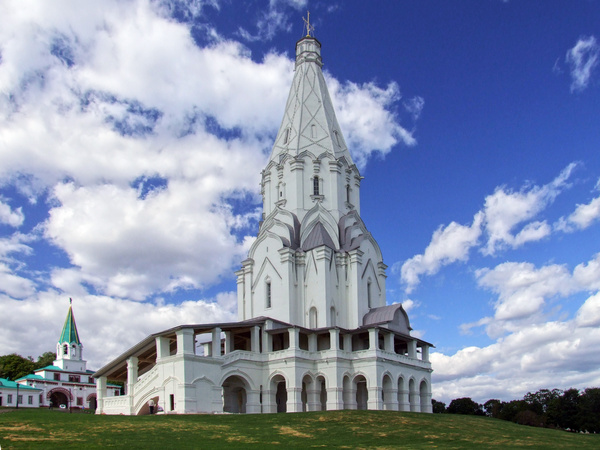 Park and estate Kolomenskoye situated in the southern part of Moscow is a unique place with relics of Russian history being created and kept for centuries. Kolomenskoye was for the first time mentioned in chronicles of Prince Ivan Kalita in 1339. Since the 14th century Kolomenskoye was the summer residence of Great Moscow Princes, and then - Russian tsars. Since 1928 the estate has been the branch of the State Historical Museum. Kolomenskoye architectural complex is comprised of the Ascension Church, John the Baptist Decapitation Church in Diakovskoye, St. George temple with belfry, Our Lady of Kazan Church, the water tower and two stone entrance gates built in the 17th century. Park and estate Kolomenskoye situated in the southern part of Moscow is a unique place with relics of Russian history being created and kept for centuries. Kolomenskoye was for the first time mentioned in chronicles of Prince Ivan Kalita in 1339. Since the 14th century Kolomenskoye was the summer residence of Great Moscow Princes, and then - Russian tsars. Since 1928 the estate has been the branch of the State Historical Museum. Kolomenskoye architectural complex is comprised of the Ascension Church, John the Baptist Decapitation Church in Diakovskoye, St. George temple with belfry, Our Lady of Kazan Church, the water tower and two stone entrance gates built in the 17th century.
Kolomenskoye Museum and Park  |
|
|
|
|
|
|
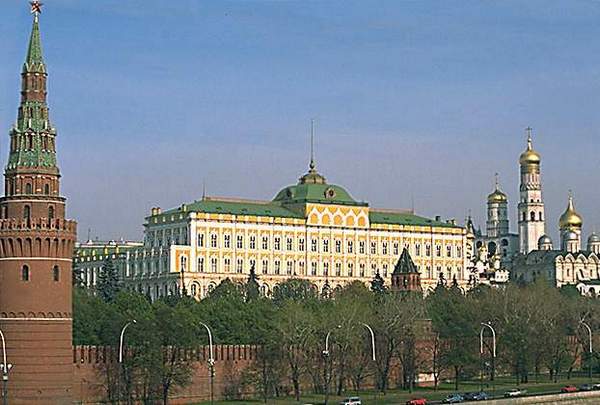 The Moscow Kremlin is situated in the very center of the capital of Russia. Its monumental walls and towers, golden-domed cathedrals and ancient palaces stand high on the Borovitsky Hill above the Moskva River forming a magnificent architectural ensemble. Since 1991, the Kremlin has been official residence of the President of the Russian Federation. The ensemble of the Moscow Kremlin has been included in the UNESCO World Heritage List. At the moment “The State Historical and Cultural Museum-Preserve “The Moscow Kremlin” is situated on the Kremlin’s territory. The unique museum complex of the Moscow Kremlin is comprised of the Armoury Chamber, the Assumption, Archangel’s and Annunciation Cathedrals, the Church of Laying Our Lady’s Holy Robe, the Patriarch’s Palace and the Twelve Apostles’ Church, the Ivan the Great Bell-Tower complex and collection of artillery arms and bells. The Moscow Kremlin is situated in the very center of the capital of Russia. Its monumental walls and towers, golden-domed cathedrals and ancient palaces stand high on the Borovitsky Hill above the Moskva River forming a magnificent architectural ensemble. Since 1991, the Kremlin has been official residence of the President of the Russian Federation. The ensemble of the Moscow Kremlin has been included in the UNESCO World Heritage List. At the moment “The State Historical and Cultural Museum-Preserve “The Moscow Kremlin” is situated on the Kremlin’s territory. The unique museum complex of the Moscow Kremlin is comprised of the Armoury Chamber, the Assumption, Archangel’s and Annunciation Cathedrals, the Church of Laying Our Lady’s Holy Robe, the Patriarch’s Palace and the Twelve Apostles’ Church, the Ivan the Great Bell-Tower complex and collection of artillery arms and bells.
Moscow Kremlin Museums  |
|
|
|
|
|
|
One of the most beautiful Moscow convents, founded in the beginning of the XVIth century - the Novodevichy Convent witnessed and participated in the important historical events, connected with the names of Ivan the Terrible, Boris Godunov, Sofia and Peter I. The architectural ensemble of the convent formed in the end of theXVIIth century is one of the best in Russia. In the main, Smolensk Cathedral, you may find a valuable wall fresco of the XVIth century and a magnificent carved iconostasis with icons of the famous imperial masters of that time. The exposition is comprised of the Old Russian painting, cloth of the XVI-XX centuries, items made of precious metals and stones and documentary collection which includes documents from the convent’s archives, library of manuscripts and books published in Russia before the 18th century. Representatives of the noble families and tsar relatives are buried on the territory of the Novodevichy Convent.
Novodevichy Convent  |
|
|
|
|
| Painting of the Late XIX - Early XX Centuries |
|
|
|
|
Private collections of Morozov, Schukin, Tretyakov and other museum arrivals from 1945. On permanent display are all significant trends in European art: Nazarenes, artists of the Paris Salon, fauvists, abstractionists etc. Picasso, Matisse, Gauguin, Cézanne and Monet are exhibited in separate halls.
Pushkin Fine Arts Museum  |
|
|
|
|
| Piece, Progress, Human Rights |
|
|
|
|
Permanent exhibition chronicles political repressions of Soviet citizens from 1917 to the 1980s in photographs and documentary materials. In 1997 this exposition project was rewarded with The Best Interior Prize at the Architecture and Design exhibition. The exposition is comprised of several parts: Ideology in USSR, Political Repressions in USSR, Through GULAG, Resistance to Unfreedom, Andrey Sakharov: Human Rights Activist and Physicist, Personality and Destiny. All parts are saturated with the atmosphere of human persecution and final victory of common sense.
Andrei Sakharov Museum and Public Center  |
|
|
|
|
| Russian Art of the 11th - Early 20th Centuries |
|
|
|
|
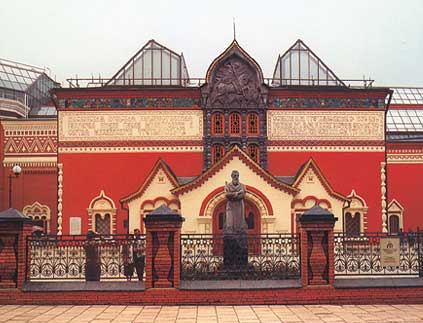 Collection of the Old Russian painting in Tretyakov Gallery was initiated by P.M. Tretyakov: in 1890 he bought icons exhibited in Historical Museum within VIII Archeological Congress in Moscow. In 1904, they were for the first time exhibited in the gallery. On permanent display are complete and high-quality collections of Medieval Russian icon painting, including works by brilliant Andrey Rublev, works by well-known Russian artists of the 18th - early 20th centuries, including works by famous Peredvizhniki, as well as collections of precious stones and church plate from Moscow cathedrals demolished in 1920s-1930s. Collection of the Old Russian painting in Tretyakov Gallery was initiated by P.M. Tretyakov: in 1890 he bought icons exhibited in Historical Museum within VIII Archeological Congress in Moscow. In 1904, they were for the first time exhibited in the gallery. On permanent display are complete and high-quality collections of Medieval Russian icon painting, including works by brilliant Andrey Rublev, works by well-known Russian artists of the 18th - early 20th centuries, including works by famous Peredvizhniki, as well as collections of precious stones and church plate from Moscow cathedrals demolished in 1920s-1930s.
Tretyakov Art Gallery  |
|
|
|
|
| State Symbols of Russia. Past and Present |
|
|
|
|
On permanent display are coins, government awards, postcards reflecting the history of the National Emblem, flag and national anthem. The exposition shows major official Russian symbols developing and changing over the last 100 years. A lot of material is dedicated to modern history of the national symbols.
Museum of Contemporary History of Russia  |
|
|
|
|
|
|